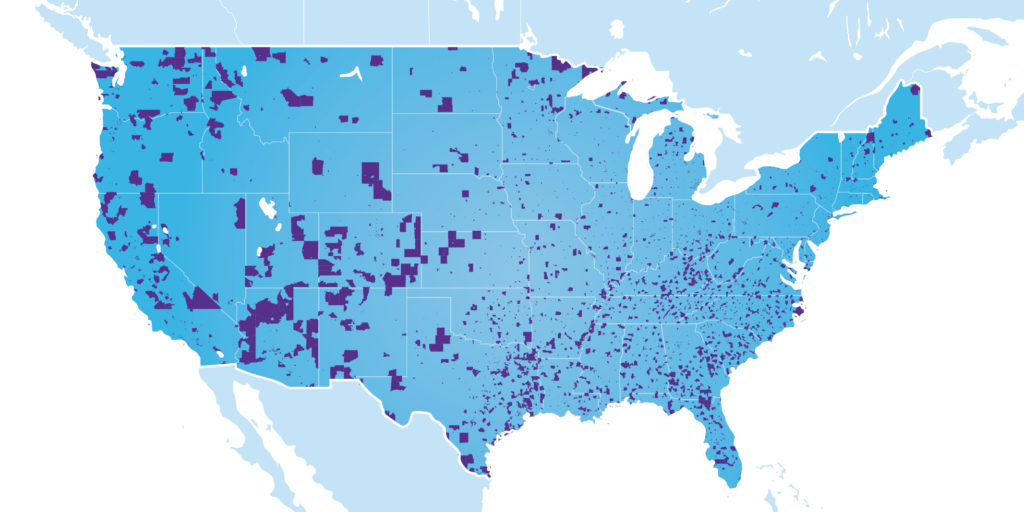
Opportunity Zones for the Average Investor: A Primer
If you follow real estate investing news, you’ve definitely heard about “opportunity zones.” While the concept is less than two years old, it’s an idea that has the potential to majorly impact the real estate investment landscape in the USA. Opportunity zones are part of a bold plan to get new money into the REI game over the next few decades.
 The legislation that created opportunity zones, The Tax Cuts and Jobs Act of 2017, gives significant tax breaks to those investing in specially designated areas with depressed economies, but there is a major catch: the investment capital must come from capital gains from another investment to qualify for the benefit.
The legislation that created opportunity zones, The Tax Cuts and Jobs Act of 2017, gives significant tax breaks to those investing in specially designated areas with depressed economies, but there is a major catch: the investment capital must come from capital gains from another investment to qualify for the benefit.
This caveat generally limits the tax benefits to the very wealthy who have significant existing assets, but that doesn’t mean there aren’t other, indirect benefits for smaller investors too. In theory, the new policy will spur an influx of well-managed money into areas that would otherwise be very low on capital, creating rising housing demands, new jobs, and overall rising standards. A higher standard of living spells opportunity for all investors even if their funding comes from a private loan. If smaller investors read the market shifts that opportunity zones create, they can make smart, strategic deals too.
What to Expect:
The new, tax-advantaged funding for distressed areas is most likely to find its way to larger projects like apartment complexes, business campuses, and entertainment centers. The smartest thing for fix-and-flip investors to do is to learn about the opportunity zones in their area and keep up to date on what major projects are being planned.
Owning property “in the path of” or “downstream from” these large scale investments is a great way to take advantage of the new shifts. New apartment buildings and business campuses will spur a need for higher quality housing nearby. Pay attention to news of planned developments funded by opportunity zone funds near you so you can benefit from the rising economy.
Frequently Asked Questions About Opportunity Zones:
What Are Opportunity Zones?

Opportunity zones are economically distressed areas where new investments may qualify for preferential tax treatment. There are no hard and fast rules as to what qualifies a community as eligible for the opportunity zone designation because the zones are determined at the state level and submitted to the office of the Secretary of the US Treasury for approval on a case by case basis.
Generally, opportunity zones are approved where there is a low-income census tract with an individual poverty rate of at least 20% and median family income no greater than 80% of the area median. Other factors are taken into account such as potential to eliminate poverty, potential to spur business growth, and geographic diversity of the zones within each state.
Where Did Opportunity Zones Come From?
 Opportunity Zones are a relatively new investment program established by Congress in the Tax Cuts and Jobs Act of 2017. Interestingly, the idea was developed and lobbied for by Sean Parker, the founder of Napster and the first president of Facebook!
Opportunity Zones are a relatively new investment program established by Congress in the Tax Cuts and Jobs Act of 2017. Interestingly, the idea was developed and lobbied for by Sean Parker, the founder of Napster and the first president of Facebook!
What’s the Point of Opportunity Zones?
The general idea of opportunity zones is to refocus private investment in areas that are economically struggling. When high net worth individuals have investments that seem to have peaked but are stable, they tend to leave the capital in that investment to avoid the capital gains tax, especially if there are few other options. Instead of leaving the capital in a stale investment, opportunity zones give investors an option to reinvest the capital gains without paying the total tax amount, depending on how long the investment stays in the opportunity zone.
It’s important to note that the policy incentivizes “patient capital investment” in overlooked areas but the only tax advantages are for monies collected from capital gains in the last 180 days.
How Can the Average Investor Take Advantage?
The average real estate investor does not have the amount of capital gains available to take direct advantage of this tax incentive. However, a rising tide lifts all boats, and small investors should look for opportunities near major investment projects in opportunity zones.
Please Note: This article and its contents are not intended as qualified tax or investment advice. Please seek professional, licensed advice before making any significant investment decisions.
For more information about Opportunity Zones, check out the following resources:
IRS Frequently Asked Questions: Opportunity Zones
List of Opportunity Zones by State

